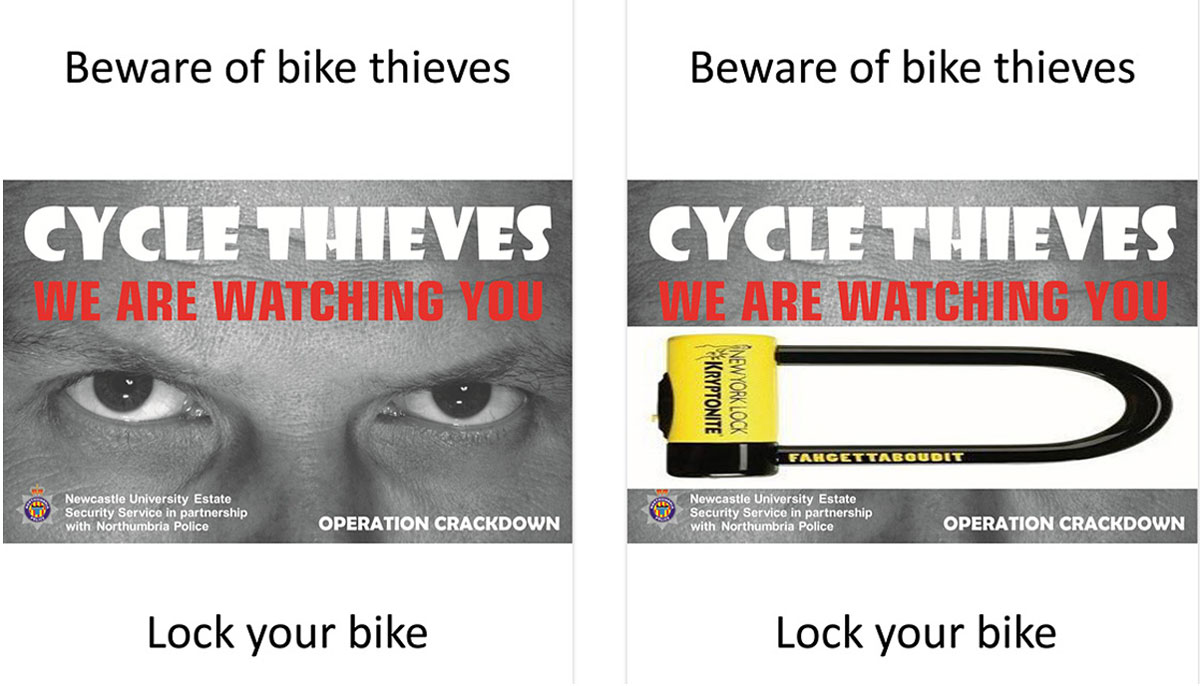eyes littering
Watching eyes prevent littering
Published on: 1 December 2015
People are less likely to drop litter if it has printed eyes on it reducing littering by two thirds, researchers have found.
In an experiment that could help tackle anti-social behaviour they printed two leaflets, one featuring a prominent image of watching eyes and the same leaflet with the eyes obscured. Even with no mention of littering, the simple image of the eyes deterred people from dropping the rubbish, reducing the odds of littering by around two thirds.
In a paper, which is published in the journal PeerJ, they show that just 4.7% of people dropped the leaflet with eyes compared to 15.6% of the control leaflets.

Co-operative behaviour
The research was led by Professor Melissa Bateson and Professor Daniel Nettle of the Centre for Behaviour and Evolution and Professor Nettle explained: “Our work shows that the presence of eye images can encourage co-operative behaviour and we think this is because people feel they are being watched.
“As we care what other people think about us, we behave better and more honestly when we feel we are being observed.
“This is reinforced by our results as we show that we didn’t need to include a message about littering, people know it is antisocial so it was enough to have an image of the eyes.”
The leaflets, which featured stern male eyes, urged cyclists to ‘Beware of bike thieves’ and ‘Lock your bike.’ This work builds on previous studies including results from 2013 when the academics used the eye pictures combined with a short anti-theft message which reduced thefts from bike racks by 62%. This has gone on to be successfully used by Newcastle University, the British Transport Police and by police forces across the country including Northumbria and Durham.
Preventing littering
A second experiment found that the effect was only present when there were no other people in the immediate vicinity as when other people are present you are less likely to behave in an anti-social manner.
Professor Bateson added: “In the fight against anti-social littering, this study could be a real help. Fast food retailers might want to think about using it on packaging to discourage people discarding the wrappers. The flip side is, for those handing out leaflets, it could help people take in the messages are they are less likely to throw away a flyer with eyes on.”
The study is based on the theory of ‘nudge psychology’ which suggests that people may behave better if the best option in a given situation is highlighted for them, but all other options are still left open, so the person isn’t forced into one particular action. In effect you ‘nudge’ people into doing the right thing.
The researchers would now like to examine the effect when used on fast food wrappers and carry out further investigation into whether less intimidating eye images or the size of the eye picture has an effect.
Reference: Watching eyes on potential litter can reduce littering: evidence from two field Experiments. Melissa Bateson, Rebecca Robinson, Tim Abayomi-Cole, Josh Greenlees, Abby O’Connor and Daniel Nettle. PeerJ. doi: 10.7717/peerj.1443



